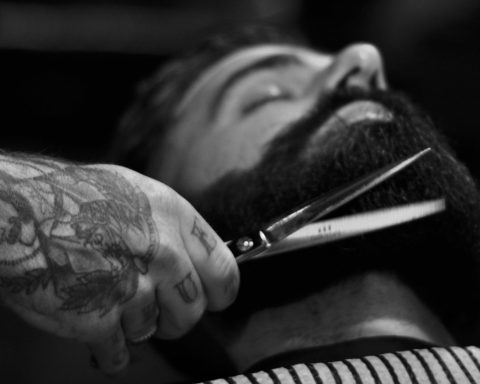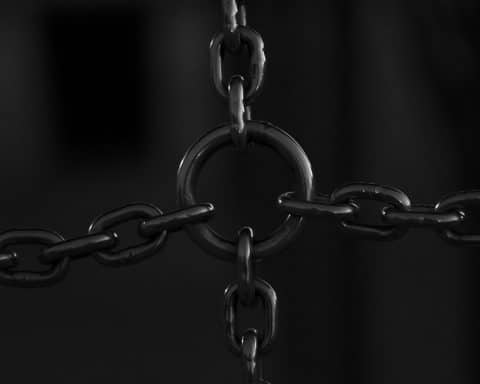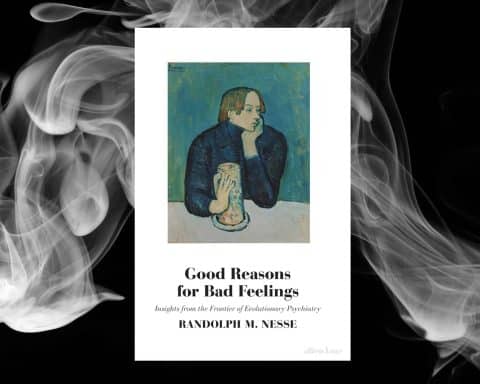 Richard Armitage is a GP and Public Health Specialty Registrar, and Honorary Assistant Professor at the University of Nottingham’s Academic Unit of Population and Lifespan Sciences. He is on twitter: @drricharmitage
Richard Armitage is a GP and Public Health Specialty Registrar, and Honorary Assistant Professor at the University of Nottingham’s Academic Unit of Population and Lifespan Sciences. He is on twitter: @drricharmitage
When a patient who happens to be a barber comes to see me for a consultation, that is precisely what – and only what – he gets. When I go to see my barber for a haircut, however, not only do I emerge looking younger and more presentable, I also get a consultation with a highly experienced counsellor.
The potential for barbershops to operate as health promotion settings has been recognised for over a decade both at home1 and abroad.2,3 More recently, novel collaborations between barbers and mental health professionals have been designed to take advantage of this comforting environment.4 Yet, when I walk out of the barbershop following my latest short back and sides, it is clearly apparent that the barber himself, rather than his shop or any co-located therapist, is the source of the improvement in my mood and wellbeing. This enhancement is greater than the effects of the haircut, and is rooted in its similarity with my work in the consulting room.
…the barber himself, rather than his shop or any co-located therapist, is the source of the improvement in my mood and wellbeing.
A substantial proportion of the general practice workload consists of the active listening, emotional support, and psychological counselling we provide for our patients. While this role is clearly stated in the GP’s job description, and our schooling and development aim to sharpen these ‘clinical’ skills, the barber in his barbershop provides exactly the same therapy despite it being a purpose for which he is not formally trained. This is masterfully achieved through three broad elements – interpersonal conditions, passive listening, and social intelligence – which collectively allow the barber to manage many of the problems that are frequently encounter in today’s general practice. Each of these factors shall now be examined, and comparisons established with the work of GPs.
When I go to visit my barber and sit down before his mirror, I instantly place my life in grave and unrivalled danger. By wilfully surrendering to somebody standing directly above me while wielding sharp implements only inches from my neck, a strong sense of trust is instantly formed between us. This was the case at our very first meeting, and has compounded on every occasion that I’ve sat in his chair since. This sustained and repeated interaction has allowed a familiar kind of relationship to emerge, in which a great deal of talking (it’s too awkward to remain silent for twenty minutes!) yet very little direct eye contact takes place. These interpersonal conditions, combined with the barber’s naturally sociable air (which may have drawn him to the profession in the first place), and the fact that the vast majority of both the shop’s barbers and patrons are men (of various ages), produce a space in which conversations that go deeper than the latest football transfer rumours are destined to emerge.
The pivotal factor that makes my barber such an adept counsellor is his command of the skill of listening. While GPs maintain eye contact, nod in the correct places, and produce non-verbal utterance to signal our understanding, the barber renders his customer ‘heard’ through an entirely different process. The general practitioner’s approach is one of performative active listening, while the barber listens passively by pointing his eyes elsewhere. This is radically different from the technique of the GP, who would rightly be considered disinterested if he chose not to look at the patient. Yet, rather than constituting evidence of distraction, the barber’s lack of eye contact while he effortlessly practices his craft is akin to one driving on their daily commute to work. This predictable sequence of highways and junctions soon becomes so familiar that it is relegated to the backseat of one’s conscious awareness – and this autopilot overridden in only rare and unexpected cases – while the spotlight of the driver’s attention is placed on other matters (such as the latest All-In podcast episode or the seed idea for an article). In this manner, while he stares at what his scissors are doing rather than directly into my eyes, the attention of the working barber is focussed largely on my words, while the taming of my dishevelled scalp is a secondary product akin to a positive side-effect.
…by seeing thousands of different customers sit in his chair throughout each year, the barber learns of the constellation of problems faced by men over their lives.
Finally, by seeing thousands of different customers sit in his chair throughout each year, the barber learns of the constellation of problems faced by men over their lives. He is often made privy to his customer’s depressions, addictions, and even marital infidelities well before their loved ones and certainly their GPs. The sum of social intelligence that these experiences generate allows him to genuinely yet confidentially declare that “I know another guy who went through that same problem,” and to carefully advise his troubled customer on what that guy found helpful, what he did not, and what a plan might look like to begin addressing the problem. This cross pollination of mutual experiences, and the informal nature of what is undeniably therapy, allows the provision of assistance that might otherwise go unsought for. For many men, speaking with a health professional about the details of their personal lives is a form of escalation that exceeds the severity of the problem. Simultaneously, the nature of the issue may be of a particular kind such that many men find it unsuitable to be shared with friends and family. Accordingly, men often feel imprisoned within their own want for independence. Their barber – being sufficiently familiar for entrustment with sensitivities, while being adequately distant to prevent externalities – offers a solution to this conundrum through his third-space positioning.
As such, the barber provides a service that is vital to the health system. As well as making the customer appear younger and more dignified (which serves to boost confidence and thus bolster their affect), they offer a pressure release valve for customer’s mental health. As such, fortnightly haircuts are akin to a counsellor who works with their client across challenging life stages. This role of counsellor is often played by their GP, especially when the psychology is manifested in the physical. Yet, while GPs are merely capable of providing consultations, barbers produce haircuts in addition to this service. As such, they are a hugely valuable addition to psychological healthcare.
References
- G Ogborn, C Bowden-Howe, P Burd, et al. Barbershops as a setting for supporting men’s mental health during the COVID-19 pandemic: A qualitative study from the UK. BJPsych Open 2022; 8(4): E118. DOI: 10.1192/bjo.2022.520
- JS Luque, L Ross, and CK Gwede. Qualitative systematic review of barber-administered health education, promotion, screening and outreach programs in African-American communities. Journal of Community Health February 201; 39(1): 181-90. DOI: 10.1007/s10900-013-9744-3
- LA Linnan, H D’Angelo, and CB Harrington. A literature synthesis of health promotion research in salons and barbershops. American Journal of Preventative Medicine July 2014; 47(1): 77-85. DOI: 10.1016/j.amepre.2014.02.007
- S Nazir. Gymshark to open first ‘Deload’ barbershop with mental health trained barbers. Retail Gazette 08 July 2022. https://www.marketing-beat.co.uk/2022/07/12/gymshark-barbershop-calm/ [accessed 28 December 2022]
Featured photo by Nathon Oski on Unsplash









Fabulous!
[…] Deputy Editor’s note- see also: https://bjgplife.com/why-barbers-have-an-edge-on-gps/ […]